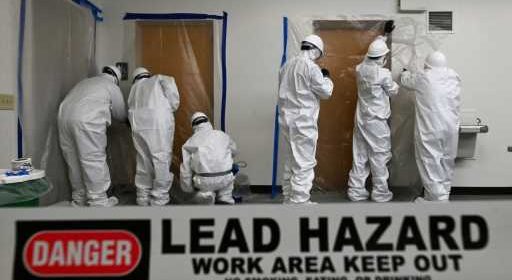Think you have lead paint in your home? Here’s what to do — and not do – The Denver Post

Though there are things homeowners can do to make their houses safer, lead abatement is not a do-it-yourself project. Certified lead workers go through training so they know not only know how to keep themselves and others safe at a worksite, but also how to not take lead home with them.
For a homeowner winging lead removal, it’s more likely than not that they will accidentally poison a family member.
“I had one family that the father said, ‘Oh, we vacuum the house every day.’ It turned out he was vacuuming with the shop-vac that he used in his construction work,” said Tanya Allison, community housing manager for the city of Allentown. “He was bringing all the dust from his day job into his home.”
The government takes lead abatement seriously as well. If the EPA finds out a contractor without the proper licenses and certification has disturbed a surface covered in lead paint greater than 6 square feet, the consequence is a significant fine.
However, in theory, just about anyone can become a certified lead worker by taking the proper educational courses and getting licensed and certified.
There are ways to minimize the risk of lead exposure or lead poisoning in old homes without specialized training. These include:
- Making sure old paint is covered and all painted surfaces are in good condition.
- Watching for paint that might chip off and carefully cleaning paint chips as soon as possible without creating dust.
- Regularly cleaning floors, windowsills and other surfaces with warm water and all-purpose cleaners.
- Keeping play areas clean and regularly washing children’s hands, bottles, pacifiers and toys.
- Removing shoes or wiping soil off shoes before entering the house to avoid bringing in lead dust that came from painted surfaces outside.
- Using vacuums that are equipped with high-efficiency particulate air filters.
- Speaking to a health care providers about testing children for lead.
- Ensuring children eat a healthy and well-balanced diet high in iron, calcium and vitamin C to help protect against lead absorption and its effects.
- Contacting the local or state health department or calling the National Lead Information Center.
Allison said even many homes built after 1978 have may have paint with lead in them, and taking actions to reduce lead exposure in newer homes is also a good idea.
“Even though they’re creating paints that have significantly less lead, there still could be some elements of lead in it, and it’s still a hazard,” Allison said. “Even if it doesn’t show up as the definition of lead paint, you still need to be aware that there could be a lead hazard.”
How to find out more about lead and lead abatement
National Lead Information Line 1-800-424-5323
Source: Read Full Article